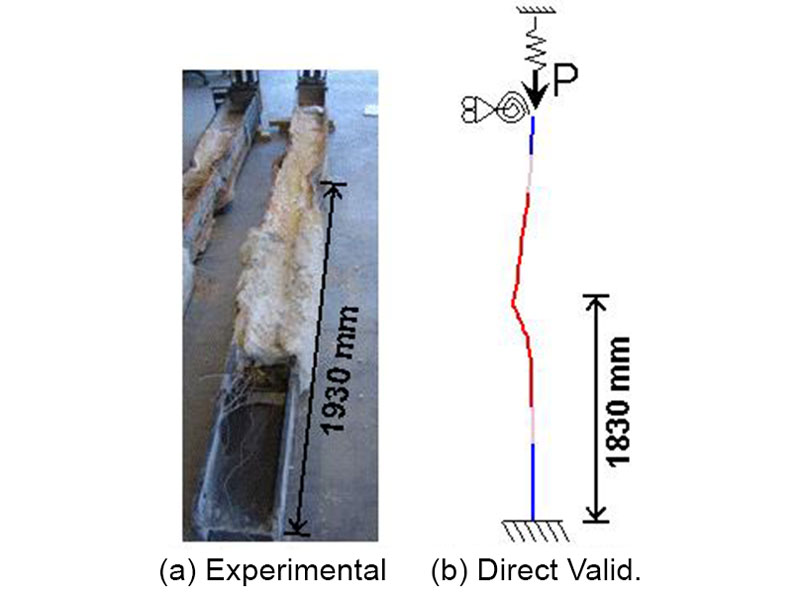
Beam-columns are defined as members that are subject to axial load (P) plus bending moment (M). In a fire, perimeter columns act as beam-columns even though they may not have been designed to resist moment. Perimeter columns are found on the perimeter of a building or adjacent to an opening (e.g., shaft) in the floor system. These columns are braced and exposed to fire on three sides only. When exposed to fire, the beams that frame into them expand and laterally displace the column. This induced displacement causes large bending moments in the perimeter columns and increased axial stress in the beams themselves. When these fire-induced reactions develop, both the perimeter column and the beam are subject to a combination P plus M and therefore act as beam-columns. It is important to understand that these columns may not have been designed to resist any moment. Our group developed simple tools and design guidelines that enable practicing engineers to predict the capacity and behavior (i.e., demand) of steel perimeter columns in a fire.
Partial List of References
- Quiel, S.E., Garlock, M.E.M., Dwaikat, M.M.S., Kodur, V.K.R. (2014). “Predicting the demand and plastic capacity of axially loaded steel beam-columns with thermal gradients” Engineering Structures, Elsevier, Vol 58, p. 49-62.
- Quiel, S.E., Garlock, M.E.M., Paya-Zaforteza, I. (2011). “Closed-form Procedure for Predicting the Capacity and Demand of Steel Beam-Columns under Fire”, Journal of Structural Engineering, ASCE, 137(9), p.967-976.
- Dwaikat, M.M.S., Kodur, V.K.R., Quiel, S.E., Garlock, M.E.M., (2011). “Experimental Behavior of Steel Beam-Columns Subjected to Fire-Induced Thermal Gradients”, Journal of Constructional Steel Research, Elsevier, v67, n 1, p 30 – 38
- Quiel, S., Garlock, M.E.M. (2010). “Calculating the Buckling Strength of Steel Plates Exposed to Fire”, Thin-Walled Structures, Elsevier, v 48, p 684-695.
- Quiel, S., Garlock, M.E.M. (2010). “Parameters for Modeling High-Rise Steel Building Frame Subject to Fire”, Journal of Structural Fire Engineering, v 1, n 2, p 115-134.
- Quiel, S., Garlock, M.E.M. (2010). “Closed-form Prediction of the Thermal and Structural Response of a Perimeter Column in a Fire”, Open Construction and Building Technology Journal, v 4, p 64-78.
- Quiel, S.E. and Garlock, M.E.M. (2008). “A Closed-Form Analysis of Perimeter Member Behavior in a Steel Building Frame Subject to Fire”, Engineering Structures, Elsevier , v 30, n 11, p 3276-3284.
- Garlock, M.E.M. and Quiel, S.E., (2008) “Plastic Axial Load – Moment Interaction Curves for Fire-Exposed Steel Sections with Thermal Gradients”, Journal of Structural Engineering, ASCE v 134, n 6, p 874-880.
- Garlock, M.E.M. and Quiel, S.E. (2007) “Mechanics of Wide-Flanged Steel Sections with Thermal Gradients Due to Fire Exposure,” International Journal of Steel Structures, Korean Society of Steel Construction, v 7, n 3, p 153-162.
- Garlock, M., Quiel, S.E. (2007) “The Behavior of Steel Perimeter Columns in a High-Rise Building under Fire”, Engineering Journal, AISC, v 44, n 4, p 359-372.
